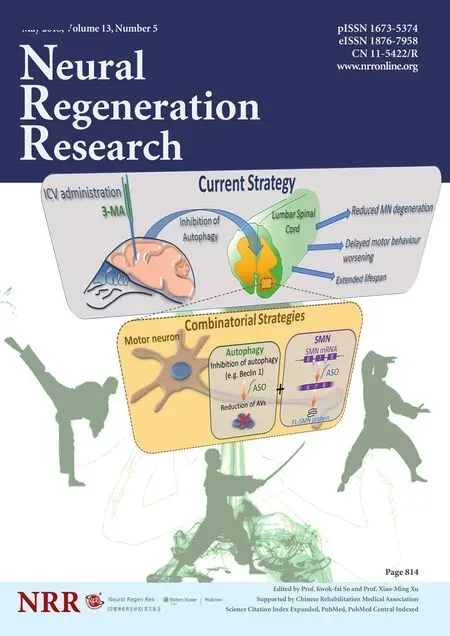Weak phonation due to unknown injury of the corticobulbar tract in a patient with mild traumatic brain injury: a diffusion tensor tractography study
In this study, we report on a patient who showed weak phonation following mild traumatic brain injury (TBI), which was demonstrated by diffusion tensor tractography (DTT).
A 56‐year‐old male suffered from head trauma resulting from a car accident. While the male was waiting on a signal in the driver’s seat of a sedan at an intersection, a sedan collided with his car from behind. His head hit the headrest after flexion and hyperextension of his head. The patient lost consciousness for approximately 5 minutes and experienced post‐traumatic amnesia for approximately 5 minutes from the time of the accident. The patient’s Glasgow Coma Scale score (Teasdale and Jennett, 1974) was 15. No specific lesion was observed on brain MRI performed at 6 weeks after the onset of head trauma (Figure 1A). The patient complained of weak phona‐tion and easy hoarseness since the onset of head trauma. However,he showed no abnormality on the Western Aphasia Battery (Teasdale and Jennett, 1974) (aphasia quotient: 99‰) or dysarthria. The study protocol was approved by the Institutional Review Board of Yeun‐gnam University Hospital (IRB No. YUMC‐2017‐06‐020).
Diffusion tensor imaging (DTI) data were scanned at 6 weeks after onset using a 6‐channel head coil on a 1.5T Philips Gyroscan Intera(Philips, Ltd., Best, the Netherlands) with 32 gradients. Fiber tracking was performed using a probabilistic tractography method based on a multi‐ fiber model, and applied in the current study utilizing tractog‐raphy routines implemented in FMRIB Diffusion (5000 streamline samples, 0.5 mm step lengths, curvature thresholds = 0.2). For analy‐sis of the corticobulbar tract (CBT), the seed region of interest (ROI)was placed on the lower pons of the anterior blue portion on the color map, and the target ROI was placed on the lower portion of the precentral gyrus and in the section of the top of the lateral ventricles(Jang and Seo, 2015). The right CBT showed partial tearing at the co‐ronaradiata level compared with the left CBT (Figure 1B).
In the current study, we investigated DTT findings of the CBT in a patient who complained of weak phonation following mild TBI,and found partial tearing injury of the right CBT. Although typical symptoms of injury of the CBT are dysarthria, dysphasia, and dys‐phonia (A fi fiand Bergman, 2005), we think that weak phonation in this patient was ascribed to the mild traumatic axonal injury of the right CBT because the CBT is involved in the control of the muscles for phonation. To the best of our knowledge, this is the first study to demonstrate injury of the CBT in patients with mild TBI (Liegeois et al., 2013; Kwon et al., 2015; Jang et al., 2015).
In conclusion, injury of the CBT was demonstrated in a patient who showed weak phonation following mild TBI. Our results sug‐gest the necessity of evaluation of the CBT using DTT for patients who show a phonation problem following mild TBI.
This work was supported by the Medical Research Center Program(2015R1A5A2009124) through the National Research Foundation of Korea (NRF) funded by the Ministry of Science, ICT and Future Planning.
Sung Ho Jang, Han Do Lee*
Department of Physical Medicine and Rehabilitation, College of Medicine,Yeungnam University, Namku, Daegu, Republic of Korea
*Correspondence to:Han Do Lee, M.S., lhd890221@hanmail.net.
orcid:0000-0002-1668-2187 (Han Do Lee)
Accepted:2017-04-10
doi:10.4103/1673-5374.232491
How to cite this article:Jang SH, Lee HD (2018) Weak phonation due to unknown injury of the corticobulbar tract in a patient with mild traumatic brain injury: a diffusion tensor tractography study. Neural Regen Res 13(5):936.

Figure 1 Brain MR imaging and diffusion tensor tractography (DTT) for a 56-year-old male patient with head trauma suffering from weak phonation.
Author contributions:SHJ was responsible for conception and design of this study and development and writing of the paper. HDL participated in conception and design of this study, was responsible for acquisition and analysis of data, and authorized the paper. Both of these two authors approved the final version of this paper.
Conflicts of interest:None declared.
Institutional review board statement:The study was approved by the Institutional Review Board of Yeungnam University Hospital (IRB No. YUMC-2017-06-020).
Copyright license agreement:The Copyright License Agreement has been signed by all authors before publication.
Data sharing statement:Datasets analyzed during the current study are available from the corresponding author on reasonable request.
Plagiarism check:Checked twice by iThenticate.
Peer review:Externally peer reviewed.
Open access statement:This is an open access journal, and articles are distributed under the terms of the Creative Commons Attribution-NonCommercial-ShareAlike 4.0 License, which allows others to remix, tweak, and build upon the work non-commercially, as long as appropriate credit is given and the new creations are licensed under the identical terms.
Afifi AK, Bergman RA (2005) Functional neuroanatomy: Text and atlas, 2nd ed. New York: Lange Medical Books/McGraw‐Hill.
Jang SH, Seo JP (2015) The anatomical location of the corticobulbar tract at the corona radiata in the human brain: Diffusion tensor tractography study.Neurosci Lett 590:80‐83.
Jang SH, Lee J, Kwon HG (2016) Reorganization of the corticobublar tract in a patient with bilateral middle cerebral artery territory infarct. Am J Phys Med Rehabil 95:e58‐59.
Kwon HG, Lee J, Jang SH (2016) Injury of the corticobulbar tract in patients with dysarthria following cerebral infarct: Diffusion tensor tractography study. Int J Neurosci 126:361‐365.
Liegeois F, Tournier JD, Pigdon L, Connelly A, Morgan AT (2013) Cortico‐bulbar tract changes as predictors of dysarthria in childhood brain injury.Neurology 80:926‐932.
Teasdale G, Jennett B (1974) Assessment of coma and impaired consciousness.A practical scale. Lancet 2:81‐84.
- 中国神经再生研究(英文版)的其它文章
- Exosomes: a novel therapeutic target for Alzheimer’s disease?
- Inhibition of retinal ganglion cell apoptosis:regulation of mitochondrial function by PACAP
- Trillium tschonoskii maxim extract attenuates abnormal Tau phosphorylation
- Association between Alzheimer’s disease pathogenesis and early demyelination and oligodendrocyte dysfunction
- Nogo receptor expression in microglia/macrophages during experimental autoimmune encephalomyelitis progression
- Endothelial progenitor cell-conditioned medium promotes angiogenesis and is neuroprotective after spinal cord injury

